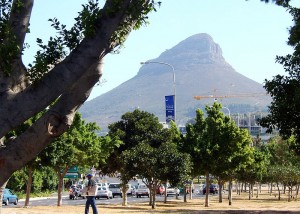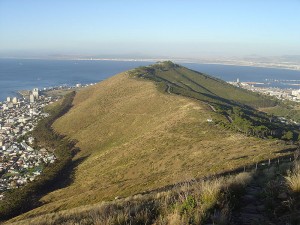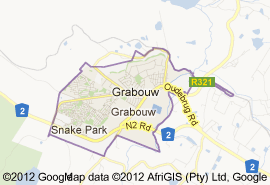Archive for May, 2012
Newlands
by admin on May.26, 2012, under Cape Town
Newlands is an upmarket suburb of Cape Town, South Africa. It is located at the foot of Table Mountain in the Southern Suburbs of Cape Town, and is the wettest suburb in South Africa due to its high winter rainfall. It is home to a number of schools, notably the South African College Schools (SACS) Junior and High Schools, as well as the Newlands Forest.
It is best known for Newlands Cricket Ground and Newlands Stadium, a famous rugby union and football venue. It is also the original home of Ohlsson’s Cape Breweries, which is still located next to the rugby grounds. The original Ohlsson’s Anneberg Brewery site is now location of the SACS schoolgrounds. The only remainder of the original brewery is the Josephine Mill, which used a water wheel to grind the grain for the brewery. This is now a historic monument.
The pipeline from the Table Mountain spring which supplies the Newlands Brewery runs under the historic Cardiff Castle Building which is located in Newlands Village.
The Liesbeek River runs through Newlands, past the Vineyard Hotel, and was the original water source used to make the first European-style beer in southern Africa. Friends of The Liesbeek maintain a walk along the river bank, past landmarks in the area.
The distinctive southern half of Newlands, bordering the suburb Bishopscourt, is known as Fernwood, after a farm estate which used to occupy this area. The original manor house of this estate still exists, but is now used as a parliamentary sports club.
Lion’s Head
by admin on May.26, 2012, under Cape Town
Lion’s Head is a mountain in Cape Town, South Africa, between Table Mountain and Signal Hill. Lion’s Head peaks at 669 metres (2,195 ft) above sea level. The peak forms part of a dramatic backdrop to the city of Cape Town and is part of the Table Mountain National Park.
Surrounding – The suburbs of the city surround the peak and Signal Hill on almost all sides, but strict management by city authorities has kept development of housing off the higher ground. The area is significant to the Cape Malay community, who historically lived in the Bo-Kaap quarter close to Lion’s Head. There are a number of historic graves and shrines (kramats) of Malay leaders on the lower slopes.
History – In the 17th century the peak was known as Leeuwen Kop (Lion’s Head) by the Dutch, and Signal Hill was known as Leeuwen Staart (Lion’s Tail), as the shape resembles a crouching lion or a sphinx. The English in the 17th Century called the peak Sugar Loaf.
Activities – Lion’s Head is known for spectacular views over the city, and the hour-long walk to the top is particularly popular during full moon. Its slopes are also a popular launching point for paragliders.
Geology, flora and fauna – The upper part of the peak consists of flat-lying Table Mountain sandstone and the lower slopes are formed by the Cape Granite and the Malmesbury formation, which are older Precambrian rocks.
Lions Head is covered in Fynbos (indigenous Cape vegetation with an unusually rich biodiversity) and supports a variety of small animals. Three main vegetation types can be found in this, relatively small, area. All three of them are endemic to the city of Cape Town and can be found nowhere else. Most of Lions Head is covered in endangered Granite Fynbos, which fades into Peninsula Shale Renosterveld (critically endangered) on the lower slopes towards Signal Hill in the north. Right on the summit of Lions Head however, is a tiny patch of endangered Sandstone Fynbos, a different ecosystem that is also found nearby on the top of Table Mountain.
Signal Hill
by admin on May.26, 2012, under Cape Town
Signal Hill aka Lion’s Rump, is a landmark flat-topped hill located in Cape Town, next to Lion’s Head and Table Mountain.
The hill is also known as “The Lion’s Flank”, but this term is obsolete. Together with Lion’s Head, Signal Hill looks like a lion sphinx.
A view of the Kramat towards Lion’s Head from the Signal Hill hiking trail
Signal flags were used to communicate weather warnings as well as anchoring instructions to visiting ships in order to ensure that they prepared adequately for stormy weather while in the bay. Similarly, ships could use flags to signal for assistance if, for example, an anchor line parted during a storm.
It is known for the Noon Gun that is operated there by the South African Navy and South African Astronomical Observatory. In 1836, a time ball was set up at the Cape Town observatory, however it was not visible to ships in the harbour, so a second time ball was erected on Signal Hill in order to relay the precise moment of 1pm Cape Mean Time. In this way ships in the bay were able to check their marine chronometers. The daily practice of dropping of the ball continued until 1934, when it was made redundant by radio signals.
The guns on Signal Hill were used to notify the public when a ship was in trouble and there was a possibility of casualties on the coast near Cape Town. Three guns would be fired from Chavonnes Battery, followed by a single gun in answer from Imhoff Battery.
There is a road to the summit and that vantage point provides spectacular views over Cape Town and surroundings, especially at dawn or sunset. Along Signal Hill Road one can also find the Appleton Scout Campsite owned and operated by the South African Scout Association.
Signal Hill is one of the only places in the world where critically endangered Peninsula Shale Renosterveld vegetation can be found. Peninsula Shale Renosterveld used to be the dominant ecosystem of the Cape Town City Bowl, but was completely endemic – occurring nowhere else in the world.
Urban growth has now covered most of this ecosystem and – along with a tiny patch on Devil’s Peak – Signal Hill has the only surviving sample of this vegetation in the world.
Table Bay
by admin on May.26, 2012, under Cape Town
Table Bay (Afrikaans Tafelbaai) is a natural bay on the Atlantic Ocean overlooked by Cape Town (founded 1652) and is at the northern end of the Cape Peninsula, which stretches south to the Cape of Good Hope. It was named because it is dominated by the flat-topped Table Mountain.
Bartolomeu Dias was the first European to explore this region in 1486. The bay, although famous for centuries as a haven for ships, is actually a rather poor natural harbour and is badly exposed to gales from both the SE and NW. Many sailing ships seeking refuge in the bay during the 17th and 18th centuries were driven ashore by storms. (See article about Wolraad Woltemade).
The Dutch colonists nevertheless persisted with their colony on the shores of Table Bay because natural harbours along this coastline are scarce and the only realistic alternatives- Simon’s Bay and Saldanha Bay – had almost no fresh water. Eventually a harbour was built in Table Bay by a process of land reclamation and defended by breakwaters to protect shipping. The older part of this structure is called the Victoria Dock. The newer part is called the Duncan Dock. The blue indentation that is the harbour and the white line of the breakwater are just visible in the satellite image. Robben Island, where Nelson Mandela was imprisoned for decades, is in this bay.
Grabouw
by admin on May.26, 2012, under Surrounds
Grabouw is a mid-sized town located in the Western Cape province of South Africa some 65 km south-east of Cape Town along the N2 highway. It is located over Sir Lowry’s Pass from Somerset West in the Elgin Valley, which is sandwiched between the Hottentots-Holland, Kogelberg and Groenland Mountains, with the valley floor still being substantially hilly.
Grabouw is the commercial centre for the Elgin Valley, the largest single export fruit producing area in Southern Africa. The town’s population at last census stands at 15,993.
History – The town was created on the farm “Grietjiesgat”, owned by a man called Willem Langschmidt, who started the community around his wife’s little trading store. Langschmidt named the village after the German town Grabow where he was born. Later, the Molteno family began to buy land in the area – principally two brothers who eventually turned the surrounding region into Southern Africa’s largest single export fruit producing area. They were influential in developing the town, for example donating the land for the town’s railway station. Another influential resident Edmond Lombardi created an apple-juice drink he called “Appletiser”, on his nearby farm Applethwaite, and introduced it to the market in 1966.
Economy – The town’s economy is based on servicing the surrounding agricultural industry, with the Elgin Valley being intensively used for viticulture and the cultivation of apples, pears, plums and other deciduous fruit.
The Elgin Valley produces 65% of South Africa’s apple exports. One of the biggest factories in Grabouw is Appletiser which provides the popular Appletiser soft drinks. Altogether, this has earned it the reputation worldwide as the “valley of apples”.
Tourism is also of importance to the economy. The N2 highway through the valley is extremely busy during the holiday season.
Attractions – Situated by the Palmiet river in the fertile Elgin valley, Grabouw is surrounded by the Hottentots Holland mountains to the north and the Kogelberg Biosphere Reserve to the south. There is wine and cider tasting on the surrounding farms and several routes for exploring the surrounding mountains begin from the town. There is also the annual Elgin Festival, which takes place on the last week-end in October and boasts a wide range of flower displays, fruit, wines and a great variety of local products. Within the town, the Elgin Apple Museum is one of the oldest remaining buildings in Grabouw. It is situated on the banks of the Palmiet River. The Museum depicts the history of the fruit industry in the region. The nearby Grabouw Country Club has scenic views overlooking the Eikenhof dam and pine covered mountains. Applethwaite Farm and Church, was built in the early 1960s by Edmond Lombardi, the founder of Appletiser. The church was built for the use of the farming community and is interesting because of the Italian marbles and wood carvings of the Stations of the Cross.
Climate – The town experiences a very mild Mediterranean climate, more moderate than most other Western Cape locales, with abundant rainfall, mostly in the winter months, although strong summer south-easterly winds can sometimes bring squalls. This wind is known as the “Black South-Easter” for its gusting winds and showers.



